Tag Archives: skincare products
“I got to get my life together. This crazy heat made me realize I can’t go to hell.”

I am very fair skinned… I mean really fair skinned. I can get sunburned wearing high SPF lotion. Yesterday, I was in the sun for five minutes loading groceries into my car. My cheeks are still reddish and warm. Suffice to say, I’m ultra-sensitive to sun and heat.
Well… the heat is on again. As a matter of fact, a brutal heat wave is scorching parts of India and Pakistan now causing health concerns, among others. Of course, climate change and global warming are to blame for the alarmingly high temperatures.
Global warming alone causes free radical damage to the skin unimaginable in the past when life was generally cooler, globally. The result on the skin is pigmentation, brown patches, and accelerated aging.
But along with global warming, we also unknowingly expose our poor skin to other heat sources causing further damage.
Certain types of exercise like hot spinning and hot yoga maybe good for the body and mind, but not always for the skin. People who do hot yoga more than five times a week are getting more discoloration and persistent redness. And wearing sunscreen apparently doesn’t seem to help.
Working in a kitchen or bakery can have the same effects too.
According to a study from Seoul National University College of Medicine, just 30 minutes of heat exposure three times a week for six straight weeks is enough to change your skin. It causes protective antioxidant levels in the skin to drop and genes to create MMP or Matrix Metalloproeinases. These are proteins that break down collagen and elastin, causing wrinkles.
Heat also triggers melanocytes, the pigment-producing cells within our skin. MMP’s and melanocytes both have positive roles to play in protecting the skin from damage and keeping it healthy, but when over stimulated by heat, they can be very damaging. And heat, when experienced regularly, can penetrate as deeply as the sun’s rays.
What’s more? If you’re Asian, African American, or Latina, susceptibility to hyperpigmentation is genetic. Excessive heat just adds fuel to that fire.
But enough of the bad news already… now that you know how bad heat can be for the skin, you can always reduce your exposure – less of that hot spin and hot yoga classes.
If, however, getting exposed to heat cannot be avoided, here’s a few things you can do to protect your skin:
- Use mineral-based sunscreens and foundations that contain physical blocks like zinc oxide. They are great at fighting sun damage and heat.
- Mineral sprays used throughout the day can also keep the skin cool. Just remember to reapply sunscreen.
- Refrigerate your skin treatment products like masks and moisturizing gels and use them immediately after a cool shower and exposure to heat.
- Use daily moisturizers and serums that contain copper, magnesium, selenium, radish root and niacinamide. And of course, those powerful antioxidants – C and E.
Finally, don’t forget to wear a good strong deodorant. The last thing you want to be worrying about is odor from the heat sweats.
For more skincare tips, visit our website, call us at Skinsense Wellness at (323) 653–4701, or email us at skinsense@skinsensewellness.com. And for skincare services, please visit us at 8448 W. Third Street, Los Angeles, CA 90048. We will be happy to see you.
“Shoutout to all the skincare products I haven’t bought yet… I’m coming for you.”
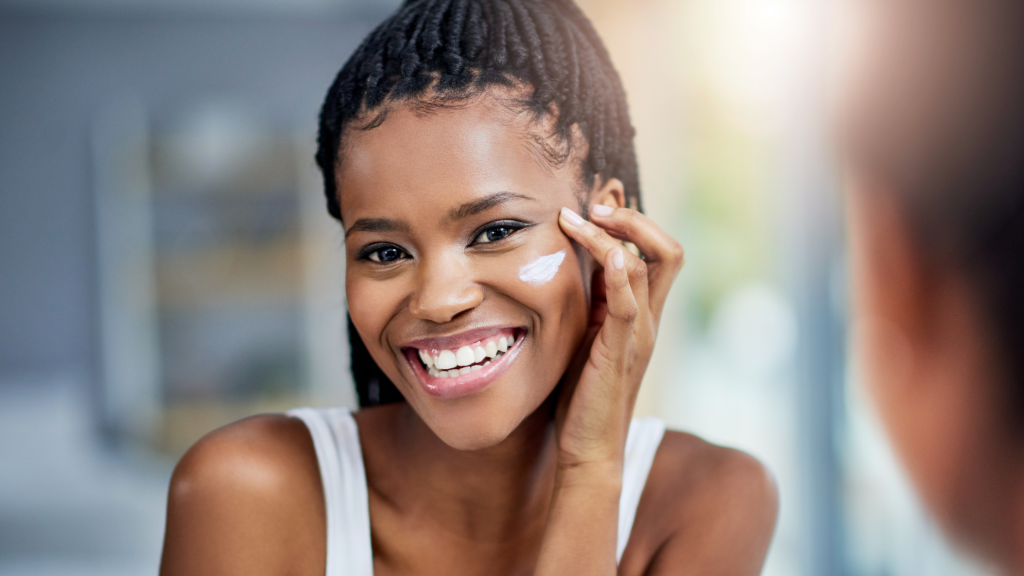
There’s something I relish about turning the calendar to January and thinking about what’s to come in the upcoming 12 months. Perhaps I’m still on a honeymoon period with the new year but there’s so much to look forward to in skincare, especially with products and approaches that can be done at home, that I can’t help gushing about them.
Here’s a few interesting new innovations that you may want to check out.
Skincare Microdosing
As its name implies, microdosing refers to using lower concentrations of active ingredients. The approach allows the skin to adapt to the benefits of the active ingredients like retinoids, AHAs, BHAs, PHAs and Vitamin C and reduce the chance of any reaction or sensitivity. When using lower concentrations over a longer period of time the skin’s barrier is kept intact and allows for a much better outcome.
This can be especially beneficial for those with sensitive skin.
Fermented Beauty
Fermentation is the process where a microbe, bacteria, or yeast is introduced to an ingredient. The procedure changes the chemical structure of the ingredient by breaking it down into the basic building blocks, which includes vitamins, essential minerals, and amino acids in their purest form. And because the molecules have been broken down, the result is smaller, more concentrated molecules that are more easily absorbed by the skin. Fermentation can also produce fruit and sugar acids which exfoliate the skin for a healthy glow.
But what’s more exciting about fermented products is their ability to help balance the skin’s microbiome — a mixture of friendly bacteria that keep the skin healthy and protected. With a balanced skin microbiome your skin is able to calm inflammation, help clear acne, eczema, and rosacea.
Blue Light protection
Blue light from the sun and all our digital devices can lead to oxidative damage in the skin which accelerates collagen breakdown and can cause fine lines and wrinkles. In addition, inflammatory hyperpigmentation of the skin is also exacerbated.
Sunscreens, filters, and using antioxidants like niacinamide and Vitamin C can help protect the skin. Besides blocking the light, blue light protection skincare also fights off free radicals formed by blue light before they can wreak havoc on your skin. Key ingredients to look for are zinc oxide, titanium dioxide, iron oxide, and antioxidants. Even products with green tea polyphenols, Coenzyme Q, resorcinol, and vitamin E would work well.
As for salon treatments to boost and keep the skin in tip top shape, nothing beats the power of the human touch. A great massage helps to stimulate circulation, reduce puffiness, and improve muscle tone. Every facial should have at least 15 minutes of massage whether it is a combination of hands, rollers, Gua sha, or lymphatic drainage. When added to a microcurrent facial, an enzyme or oxygen treatment or an AHA protocol to peel and lighten, massage makes all the difference to the efficacy of any facial treatment.
Besides, having a professional choose and apply the concentration of the more active ingredients is a much safer way to get results without any irritation.
For more skincare tips, visit our website, call us at Skinsense Wellness at (323) 653–4701, or check out my other blogs on Medium. And for skincare services, please visit us at 8448 W. Third Street, Los Angeles, CA 90048. We will be happy to see you.
“I remember smell better than my multiplication tables.”
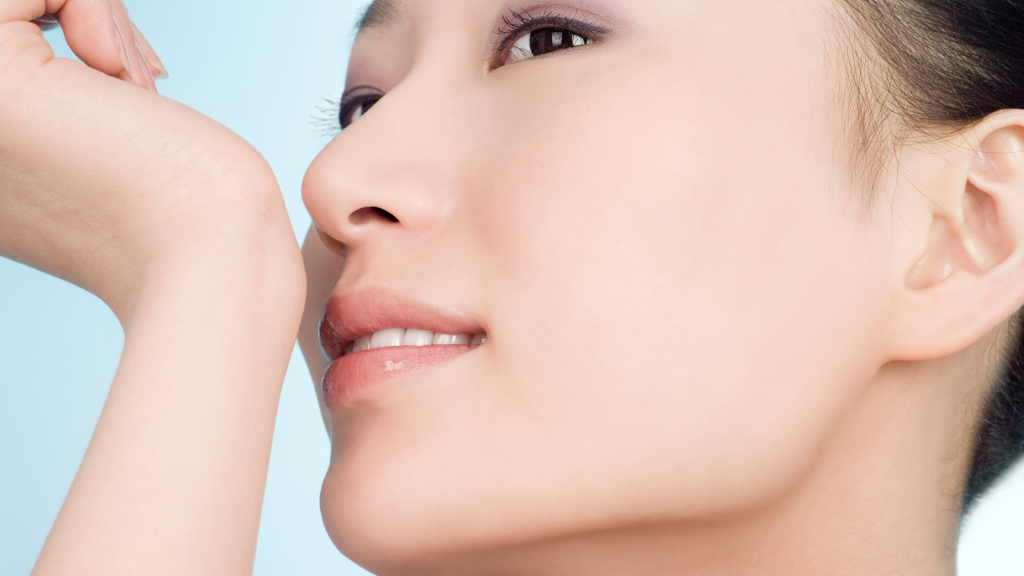
Last year when I was doing home service facials for my clients, one of the homes I went to had the smell of fresh oven-baked chocolate chip cookies as I walked in. As soon as the scent of chocolate combined with brown sugar and dough hit my nose, I was transported back to my childhood in my grandma’s house and can’t help but reminisce on those good old happy times. For some reason scents have a way of magically bringing back a memory.
Working with beautiful aromas and scents is one of the perks of being an aesthetician and salon owner that I enjoy so much — from the essential oils that freshen the space to the skincare products that I use for my facial treatments. All in all, it makes for a totally relaxing atmosphere. My clients love it and can’t help but comment on the pleasant smell as they enter the salon or as I slather their skin with the mildly scented skincare products. It certainly is a key element in the whole self-care experience.
However, fragrance has garnered a bad reputation recently. According to the American Academy of Dermatology, fragrances are considered one of the leading causes of allergic reactions on the skin. Let’s get to the heart of the matter.
What is fragrance in skin care products?
It’s any ingredient or combination of ingredients added to a product to make it smell a certain way. It could be to cover up an unpleasant or chemical-like smell, or it might simply be there to add a pleasant aroma to an odorless substance.
From moisturizers to serums to sun care, fragrance is added to all kinds of skin care products to make them more pleasurable to apply and bring an element of luxury to your skincare regimen.
Now to find out what’s best for our skin, let’s take a look at different types of formulations.
Natural — are usually created with a mixture of natural-origin ingredients and essential oils.
Synthetic- are made up of artificially derived chemicals and are of particular concern among those with sensitive skin because of their potential to cause irritation.
Fragrance-free — are products that do not have added chemicals that enhance aroma or mask an odor.
Unscented — are products that has no scent. Often so-called masking fragrances are used to cover up unwanted smells from other ingredients that may not have a pleasing odor.
Organic, natural, and green — are botanical extracts and essential oils that may be manufactured or naturally occurring.
Fragrances today aren’t generally harmful, but some people with sensitive skin might like to avoid them. No matter the source, some fragrances may contain allergens. So, both natural and synthetic fragrances may cause irritation to very sensitive skin types. If you have a skin condition, such as dermatitis or eczema, or very reactive and allergy-prone skin, it would be best to use fragrance-free products.
However, only one percent of the general population suffers from fragrance allergies. If you have a more resilient skin type, you may not experience any irritation at all and, in fact, may benefit from the therapeutic element that fragrance brings to a product — whether natural or synthetic. It is usually a safe addition to skin care products and may evoke positive emotions and happy memories as well as bring a more luxurious feel to your routine.
For more skincare tips, call us at Skinsense Wellness at (323) 653–4701, or check out our other blogs on Medium. And for skincare services, please visit us at 8448 W. Third Street, Los Angeles, CA 90048. We have re-opened our doors and are happy to welcome you all back.
“Chemistry… if you’re not part of the solution, you’re part of the precipitate.”
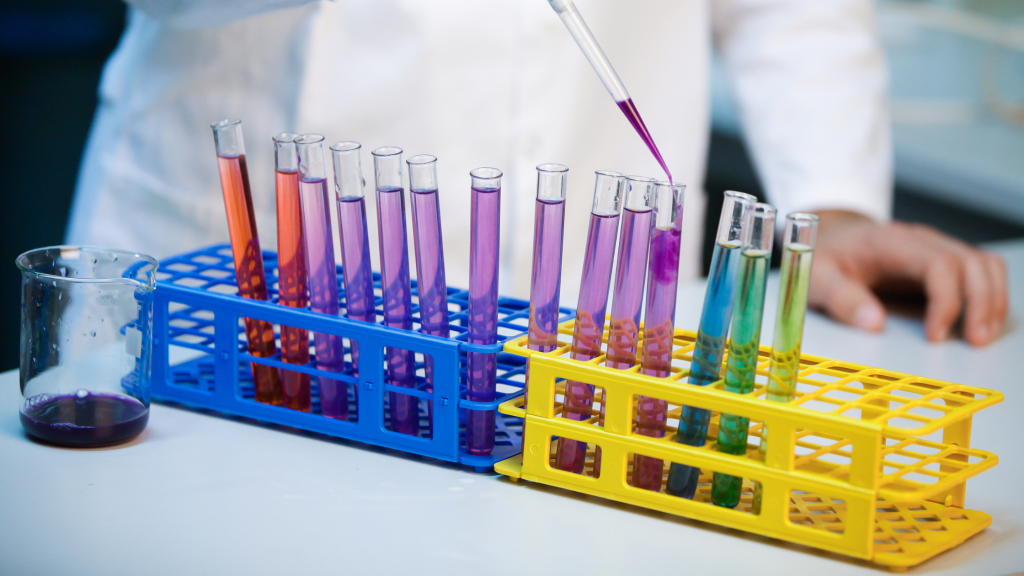
My 7th grade chemistry teacher was the first to introduce me to the pH scale by using litmus paper. We could establish the pH value of any liquid by dipping the paper into the liquids and then watching to see what color the paper turned. For example, it would show red for vinegar (acid) and blue for milk (alkaline.) Purple represented a neutral pH. It was fun!
So, what exactly is pH?
The term “pH” refers to “potential of hydrogen”. It concerns the activity of hydrogen ions (ions are molecules that carry a positive or negative charge) in a water-based solution. Hydrogen makes up two thirds of water, water being two hydrogen molecules plus an oxygen molecule, H²o.
The pH of a solution is indicated by a numeric scale that runs from 0–14. Anything below 7 (which is pH neutral) is considered acidic, while anything with a pH greater than 7 is considered alkaline, also referred to as basic.
How does pH relate to our bodies?
In our bodies, blood or cytoplasm are the “solutions” in which the required ions are floating. The normal pH of human blood is 7.35–7.45. Anything above or below that could have negative effects on our health.
With the growing interest in the microbiome in recent years and the ecosystem of our body, the principle of pH balancing is again brought to the forefront. This holistic approach believes that the foundation of healthy digestion is built on a simple eating system that maintains an ideal acid/alkaline (pH) balance in the body. Seventy per cent of the immune system is based in the abdomen and 90% of the tryptophan needed to make serotonin for the brain — essential to ensure we feel good — is made here.
As far as food intake goes, the suggested pH ratio would be a diet of two-thirds alkaline and one-third acid-forming foods. So, to take a step in the right direction, let’s outline a few alkaline foods that we can incorporate in greater quantities and some acidic foods we can eliminate.
Raw, green leafy vegetables like chard, kale and spinach are all excellent alkaline-rich foods. So are avocados, celery, cucumbers, tomatoes, peppers, broccoli, coconut, cherries, grapefruit, lemons and watermelon. A healthy way to start and end each day with an alkaline system for example, would be with a cup of warm water flavored with half a lemon.
Things to avoid would be white flour, coffee, red meat, too much alcohol, simple carbohydrates and artificial sugar.
How does pH affect our skin?
Our skin’s surface and uppermost layers are naturally acidic, making it compatible with acidic skin care products. The skin’s average pH is 4.7 and although the pH of our skin increases with age, it remains acidic.
Our skin has a protective film on its surface that’s known as the acid mantle. It plays a vital role by working with skin-natural ingredients like ceramides, cholesterol, enzymes, sweat, and even our skin’s own oil to protect skin’s surface and lower layers from external threats.
The skin’s acidic pH also plays a role in keeping its delicate microbiome balanced. An acidic microbiome makes it more difficult for harmful pathogens to multiply but lets the good stuff flourish. Frequently disturbing skin’s pH to a strong degree can lead to or worsen many problems, including common skin disorders (eczema, acne, rosacea, and wrinkles) and that dry, tight feeling from washing with bar or liquid soaps (most soaps are alkaline). Using highly acidic (pH 2.5 or lower) or alkaline (pH 8 or greater) products causes a significant disruption in skin’s pH too.
To avoid problems, look for pH-balanced skin care products (between pH 4 and pH 7). How do we do that when skincare products in the US don’t show the product’s pH? An easy solution would be to get a pH test kit available online for home use.
So, getting healthy glowing skin is really easy. All it takes is a few simple and inexpensive tweaks to your beauty routine and your diet.
For more skincare tips, call us at Skinsense Wellness at (323) 653–4701, or check out our other blogs on Medium. And for skincare services, please visit us at 8448 W. Third Street, Los Angeles, CA 90048. We have re-opened our doors and are happy to welcome you all back.
“Summer is over. Time to officially remember what day of the week it is.”

I remember my first day of college (although it was ages ago). I was excited and nervous at the same time. I was looking forward to a new chapter in my life but also a bit scared whether the students and teachers would be friendly, if I would find my classrooms without getting lost, and if I could catch up with all the lessons. Needless to say, it was stressful. To make matters worse, my skin started breaking out from the stress. Ugh!
It’s back to school time once again, and this year back to school for most students would be in-person after a long period of exclusively online classes. For students who are back on campus in their dorms, there are safety restrictions (of course) and six feet of social distancing. Other students are doing a hybrid model, where they are doing both virtual and in-person coursework. And others are completely remote.
Whatever the format, here is a list of essential products for students to use back in school to make sure their skin makes the grade.
1. First and foremost, have plenty of masks available — both washable and disposable, and lots of hand sanitizer and gloves. Washing with soap and water works really well and is an important part of staying safe and protected but you need some back up when a sink, hot water and soap aren’t around the corner.
Tip: Spray the inside of clean masks with a 2% salicylic acid or a tea tree hydrosol to help control breakouts. And emphasize the importance of using a clean mask every day.
2. Next, select an easy to apply wash-off cleanser that can be used morning and night. This will help to keep the skin clean in spite of late-night studying and constant mask wearing.
3. Bring a few spare pillowcases. These should be changed twice a week to prevent acne breakouts and for good hygiene.
4. Pack a lightweight daily moisturizer that is formulated for your skin type and can be used twice a day. Chances are you’re going to need extra moisture while away, living through winter weather and colder temperatures. Think of one with hyaluronic acid or ceramides for an extra boost.
5. A sunscreen with an SPF 30 should be worn daily. UV rays can still penetrate clouds and cooler weather.
Tip: some sunscreens are also moisturizing and can eliminate the need for regular moisturizers in the morning as long as your skin is not too dry.
6. College dorms are known for their cavalcade of aromas, many of them pungent and unpleasant! Use essential oils to improve the atmosphere, sleep, concentration, reduce stress and increase well-being. Electric plug-ins are safe and easy to use and available on Amazon.
Tip: orange, grapefruit and lemon are great mood elevators. Peppermint and eucalyptus help with concentration. Lavender is calming and can be mixed with any other oil. And of course, all the essential oils improve air quality and smell great!!
7. Hand cream — hands can get very chapped from all the handwashing, especially in cold weather. Keep several tubes in your backpacks and dorm room.
8. Spot treatment — even with daily routines, acne and breakouts happen. That can certainly put a damper on being social even though it is somewhat restricted at the moment. Spot treatments can discourage picking and improve confidence.
Tip: Salicylic acid, tea tree oil and Neosporin crème are all available over the counter and suit most breakout situations.
Being prepped for safety and well-being will allow you to concentrate on your studies and stay focused while still enjoying your college experience.
“In school, you’re taught a lesson and given a test. In life, you’re given a test that teaches you a lesson.” — Tom Bodett
For more skincare tips, call us at Skinsense Wellness at (323) 653–4701, or check out our other blogs on Medium. And for skincare services, please visit us at 8448 W. Third Street, Los Angeles, CA 90048. We have re-opened our doors and are happy to welcome you all back.
“I found a really effective sunblock, It’s called my house.”
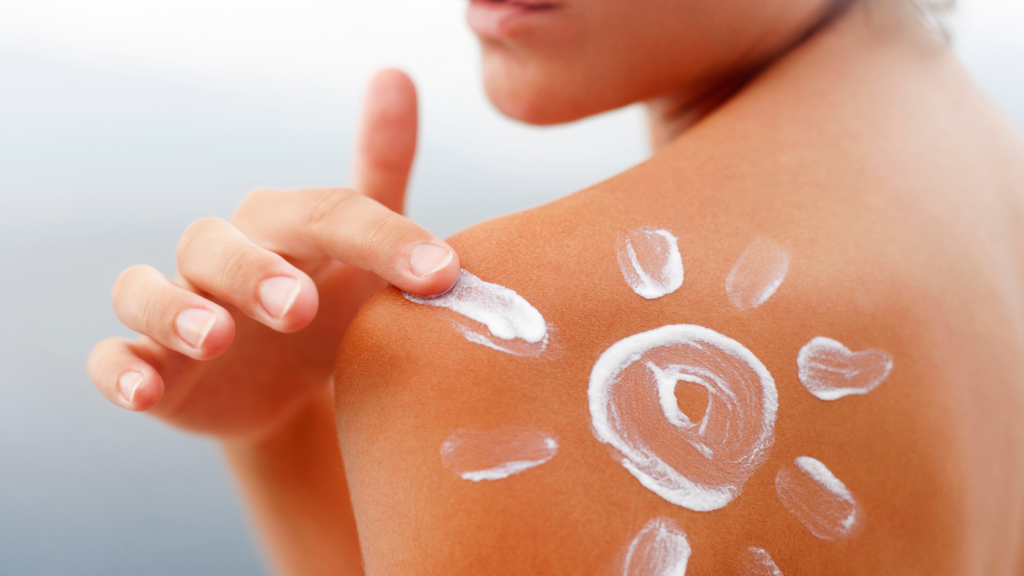
Perhaps you can call me a sunscreen bully because I constantly tell my clients to wear it daily before going out, even on a cloudy day. I slather a generous amount on my face and body every morning. It’s always best to protect ourselves from the dangerous UV rays of the sun and from the risk of skin cancer. Now I hear from the news that sunscreen actually causes cancer. What’s going on! And should I freak out already?
Benzene, a colorless liquid that is known to be carcinogenic has been found in some sunscreens and after-sun products by Valisure, an online pharmacy and lab, most of them spray-ons. It’s important to note that benzene is not an ingredient in sunscreen, and Valisure’s petition for a recall of these products suggests that the findings are a result of contamination somewhere in the manufacturing process.
Here’s what changes you can make to stay safe.
With summer in full swing, sunscreen is a necessity for everyone. Beachgoers often reach for aerosols because they are easier and less messy to apply than creams so when their favorite brands are suddenly unavailable there can be a confusing scramble to find a replacement.
Furthermore, the discussion about whether anything is really safe reoccurs, and this leaves people open and vulnerable to sun damage and potential skin cancers. Being in the skincare industry as a fulltime aesthetician, I definitely think it’s not an option to skip on sun protection most especially in the summer.
- Pick a sunscreen that wasn’t contaminated. The majority of products tested — over 200 of them — had no detectable amounts of benzene, and uncontaminated sunscreen should continue to be used.
- Check and choose formulas for safety. As far as formulation goes, there are two kinds — mineral based with zinc and titanium, and chemical blends that contain actives like octinoxate and homosalate. Very often both formulas contain other anti-inflammatory and anti-oxidant ingredients like aloe, green tea, lindera root, arnica and pomegranate, a great source of vitamin C. If you have very sensitive skin or suffer from rosacea, use a mineral based formula. Avoid oxybenzone, an ingredient that may behave like estrogen. Oxybenzone penetrates the skin easily and can disrupt the hormonal system. Look for products that along with zinc oxide, contain 3 percent avobenzone or Mexoryl SX. They protect skin from harmful UVA radiation.
- Avoid sprays and aerosols. They cloud the air with tiny particles that may not be safe to breathe particularly when used on children. And remember, a few blistering sunburns in childhood can double a person’s lifetime chances of developing serious forms of skin cancer. Keep infants under 6 months out of direct sun and well covered and shaded at all times. Their skin is not yet protected by melanin. It is important to note that any SPF with a higher protection factor of 30 only provides 1–2% extra protection and a much higher possibility for irritation.
- Apply sunscreen liberally at least 30 minutes before leaving the house and layer twice waiting 15 minutes before second application if possible. This ensures a more thorough covering. (Consider any protection contained in make-up a bonus and not a main source of protection.)
- Get your skin checked annually by your dermatologist. Men ignore sun safety at their peril. In 2021, the American Cancer Society estimates about twice as many American men are expected to die from melanoma as women. Surveys show that 48 percent of men report routine sun avoidance, compared to 68 percent of women.
- Slop on sunscreen and reapply it often, especially if swimming and sweating a lot. If it doesn’t smell right or feel right find another by using these guidelines.
- Wear a hat and sun protective clothing. And if possible, seek shade between 10 a.m. to 4 p.m.
Sunscreen is still a very important, effective, and a safe, scientifically-based way to prevent the harmful effects of the sun. Well, I guess I will be a sunscreen bully for life.
For more skincare tips, call us at Skinsense Wellness at (323) 653–4701, or check out our other blogs on Medium. And for skincare services, please visit us at 8448 W. Third Street, Los Angeles, CA 90048. We have re-opened our doors and are happy to welcome you all back.
“The only ex I need in my life is my exfoliator.”
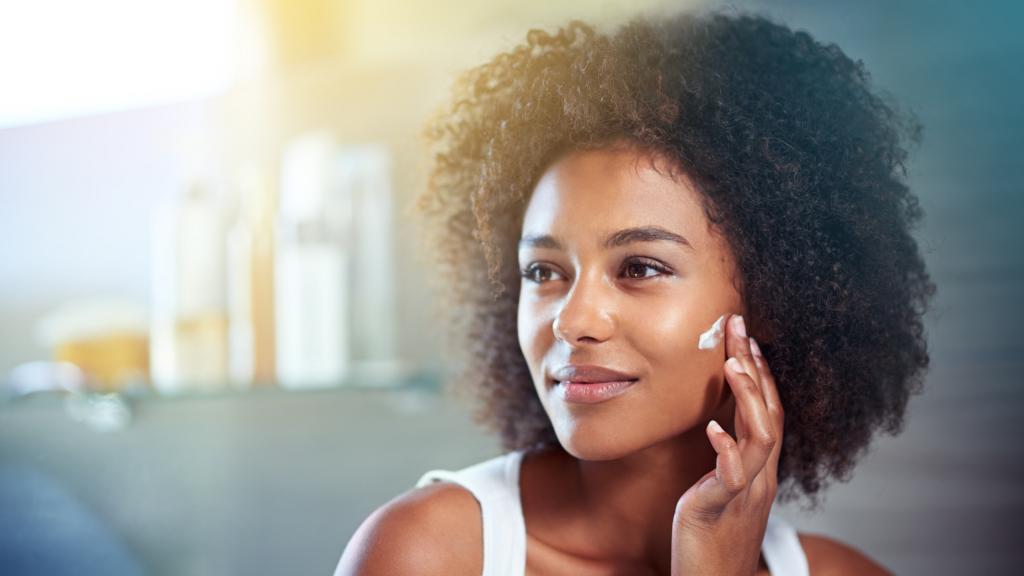
Did someone say New Kids on the Block? Yes, there’s a new kid on the block… the skincare block, that is. And while it’s not the popular boy band of the 90’s it has uh-oh-oh!!! the Right Stuff. They are Polyhydroxy acids (PHAs) and are considered “cousins” of alpha hydroxy acids (AHAs). They also happen to be one of the latest trendy beauty ingredients touted to banish fine lines.
What are they?
PHAs are chemical exfoliants, often used to remove the unwanted cells on the skin’s surface resulting in a more even skin tone and texture. The most common PHAs are galactose — a naturally occurring sugar that skin uses to synthesize collagen, lactobionic acid — derived from oxidized lactose (milk sugar), and gluconolactone — a powdery substance extracted from gluconic acid, found in animals and corn.
What do they do?
PHAs are a chemical exfoliant. And exfoliation helps to slough away dead, dull-looking skin resulting in reduced hyperpigmentation and improved skin texture. They are related to alpha and beta hydroxy acids but because they are formed from larger molecules, they penetrate the skin more slowly and without irritation.
PHAs hydrate skin. They support the skin’s barrier function, which locks in moisture and reduces the appearance of fine lines and wrinkles.
PHAs also help skin-care ingredients penetrate deeper into the layers of your skin, thus boosting their efficacy.
And, PHAs have antioxidant and humectant properties that help undo and prevent UV and pollution-induced free radical damage to collagen and skin resulting in an anti-aging effect. Over time this can soften fine lines and wrinkles.
Wow!!! Sounds like another great tool for the skincare toolbox.
Here’s a recap on their benefits:
- They’re Gentle Giants: They stay on the surface where they do a great job without traveling quite as deep as a straight-up AHA.
- Non-irritating: If you have sensitive skin, you’ll probably be able to apply a PHA with little-to-no stinging or irritation.
- Keep Skin Moist: PHAs are humectants (meaning they retain moisture reserves) and offer a great way to capture that healthy glow!
- They’re Anti-aging: These acids may be best known for their exfoliation properties, but their real claim to fame should be that they come armed with tons of anti-inflammatory and antioxidant properties.
How do you apply them?
PHAs are used in a wide selection of products, and in a few different ways. They are best applied to the skin at night to give them sufficient time to loosen the bonds between the outermost epidermis. They can be incorporated into any product type — liquid exfoliant, toner, mask, or moisturizer, which can be layered on top.
PHAs can also be combined with retinoids when treating acne or photoaging but be guided by your skincare professional when using PHAs this way to avoid any irritation.
A lot of AHA solutions will have PHAs in them in order to clean up the surface-level debris AHAs miss. PHAs are also added as an extra exfoliating factor to a non-exfoliating product like a cleanser so that dead skin cells are washed away when rinsed off. And PHAs are often the main ingredient and selling point.
If you’re looking for a natural, nontoxic compound that could positively influence cell turnover and keep your skin clear and healthy, PHAs might be the way to go!
For more skincare tips, call us at Skinsense Wellness at (323) 653–4701, or check out our other blogs on Medium. And for skincare services, please visit us at 8448 W. Third Street, Los Angeles, CA 90048. We have re-opened our doors and are ready to welcome you all back.
“Out of all my body parts, I feel like my eyes are in the best shape. I do at least a thousand eye rolls a day.”
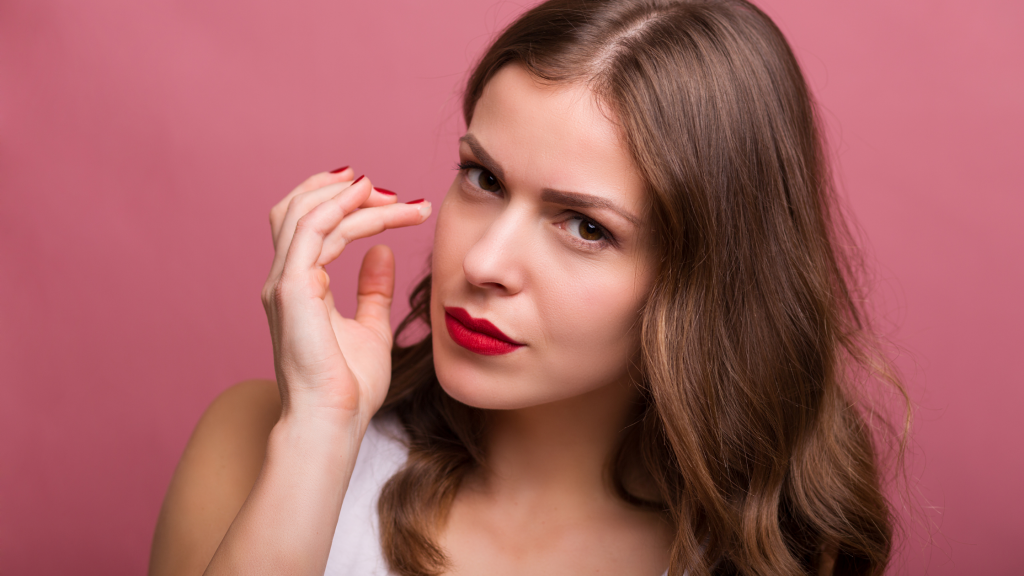
Making eye contact with everyone I meet tells me a lot about the person. I find it fascinating and I am certainly not alone in this. The results of a survey in the U.S., taken to find out what men and women notice first about the opposite sex, put eyes at the top of the list. This does not surprise me. And as an aesthetician, I can tell if the person cares enough to include the skin surrounding the eye area in their daily skincare routine.
This area is thinner, contains fewer oil glands and muscle tissue. It’s also delicate and often very sensitive to the environment and anything you put on it. Lack of sleep, exercise, and eye strain show up as dark circles, wrinkles and puffiness and eyes are the first area of the face to show tiredness. Layer seasonal allergies on top of all this and eye skincare can be a nightmare!!
Here are a few eye-skincare tips to keep them bright and young-looking.
1. Keep them moisturized. Cleansers and moisturizers for the face do not cut it. They are often too heavy and can cause those annoying little white bumps (called milia,) irritation and swelling. Eye creams, on the other hand, are often formulated with enough active ingredients that may help reduce wrinkles and fine lines without any irritation. Some ingredients to look for are:
a. Golden root, argania spinosa, Summer snowflake bulb, caffeine, hydroquinone, kojic acid, and vitamin C to reduce the appearance of dark circles.
b. Caffeine, green tea and coffee berry polyphenols, dipeptide-2 (Eyeliss), and willow herbs to help reduce puffiness.
c. Biopeptides to tighten.
d. Evening primrose and hyaluronic acid to hydrate.
e. Tuberose to revitalize tired eyes.
f. Argan oil, retinol, and peptides to stimulate collagen production resulting in plump and lift.
g. Antioxidants to help reduce free radicals triggered by UV rays, smoking, and pollution
2. Be gentle. When applying skincare products, start on the lids going from the inner to the outer area, circling under and into the side of the nose. Same with cleansers which are best used on a damp cotton pad. We know waterproof mascara can be challenging to remove but harsh makeup removers should be avoided.
3. Wear sunscreen. When applying sunscreen, don’t forget the upper eyelid. This is one of the most overlooked areas. Also consider investing in a pair of sunglasses that offers UV protection. This can help protect not only your eyes but also the skin around them from unwanted UVA and UVB rays.
4. Get a spa treatment. There are some great treatments that target the eye area using thermal therapy and microcurrent. These treatments use super light serums that penetrate with the help of the heat and electrotherapy. And when done consistently, can make the eye area look toned and firm.
5. Keep a healthy lifestyle — get enough sleep, eat healthy, and exercise. Try regular exercise that involves hanging upside down — yoga and downward dog for example. They can really make a difference because they defy gravity and reverse the blood flow.
6. Retire devices that emit blue light — computer, cellphones, televisions, one hour before bedtime. And consider using blue-light blocking glasses if your work demands hours of screen time. Blue light, known as high-energy-visible light (HEV), not only strains the eyes but can also accelerate the aging process and cause dryness.
Lastly, if topical treatments simply aren’t working, consider nonsurgical options like botox, fillers, and laser resurfacing.
For more skincare tips, call us at Skinsense Wellness at (323) 653–4701, or check out our other blogs on Medium. And for skincare services, please visit us at 8448 W. Third Street, Los Angeles, CA 90048. We have re-opened our doors and are ready to welcome you all back.
“I finally figured out what I wanted to be when I get older… YOUNGER.”
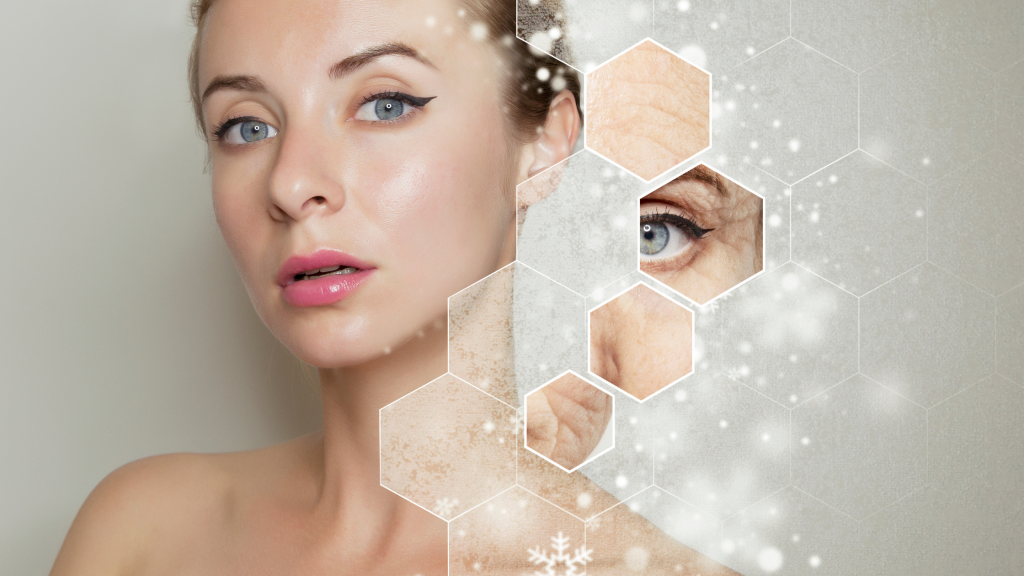
I have resolved to grow old gracefully. What do I mean by that? Apart from lying about my age (which oftentimes, I don’t remember anyway), I am committed to taking care of my skin and my overall health — none of the harmful products and treatments. And I’m just as committed to taking care of my client’s skin, keeping it healthy with that youthful glow.
On the subject of youthful-looking skin, at Skinsense we’re obsessed with the anti-aging benefits of microcurrent, and we use it a whole lot. It has been a long-standing star on our electrical stage and so I thought it might be helpful to talk about what it does and how it compares and works with that now (in)famous muscle relaxer, Botox.
Renowned skin physiologist and cosmetic chemist, Dr. Pugliese, maintains that micro-current creates lots of activity on a deep, dermal level where all our serious aging problems begin. It stimulates the fibroblasts, cell of connective tissues, which significantly increases the production of collagen and elastin — the skin’s structural proteins — and also GAG’s — glycosaminoglycans — the viscous material in which protein is embedded.
The other great advantage of using micro-current is that it boosts the production of ATP — adenosine triphosphate — the glucose type fuel responsible for all cellular activity. Other benefits include promoting waste removal, healing, and circulation. And not often mentioned but something that we have noticed with using micro-current at our salon is its ability to calm rosacea and irritated skin.
The result… a more youthful, even textured and plump complexion.
Microcurrent has been used for decades to treat everything from wounds, paralysis, migraines, twitchy eyes, and chronic pain. It operates on a sub-sensory level, which allows the electrodes to glide over the skin with little discomfort. Maybe sometimes a slight pulling or twinge in the dental and neck zones, but the intensity can be adjusted to suit the client’s pain tolerance and can work on the lowest frequencies with great success.
A series of six microcurrent treatments booked bi-weekly or weekly is generally recommended at first to start re-educating the muscles. Regularity of treatment obviously depends to some degree on each clients’ availability. After the first series, micro-current can be added to other facial routines or done every few months to tighten and boost muscle tone.
We recommend clients wait two weeks after receiving Botox before having micro current to avoid any product transference or migration.
Botox on the other hand, does not work directly on the muscles. It binds to the neurotransmitters preventing them from signaling muscles to contract. Done once or twice a year it can knock out expression wrinkles very effectively. But when done too often, it can cause muscular atrophy, where the muscles become slack. This is where electrical stimulation from microcurrent devices help.
How effective are at-home microcurrent devices?
Although not as potent electrically and considering they are being used by untrained hands, if used consistently, these tools can certainly deliver the promised benefits.
Along with a healthy lifestyle and a good product regimen, including topicals that contain peptides and a variety of anti-aging ingredients, microcurrent can restore fullness and muscle tone while Botox can soften expression lines.
Overall, it’s the perfect anti-aging skin treatment partnership. It allows us to loosen gravity’s grip just a little bit more!
For more skincare tips, check out our other blogs on Medium or call us at Skinsense Wellness at (323) 653–4701. And for skincare services, please visit us at 8448 W. Third Street, Los Angeles, CA 90048. We have re-opened our doors and are ready to welcome you all back.
“Good things happen to those who double cleanse.”
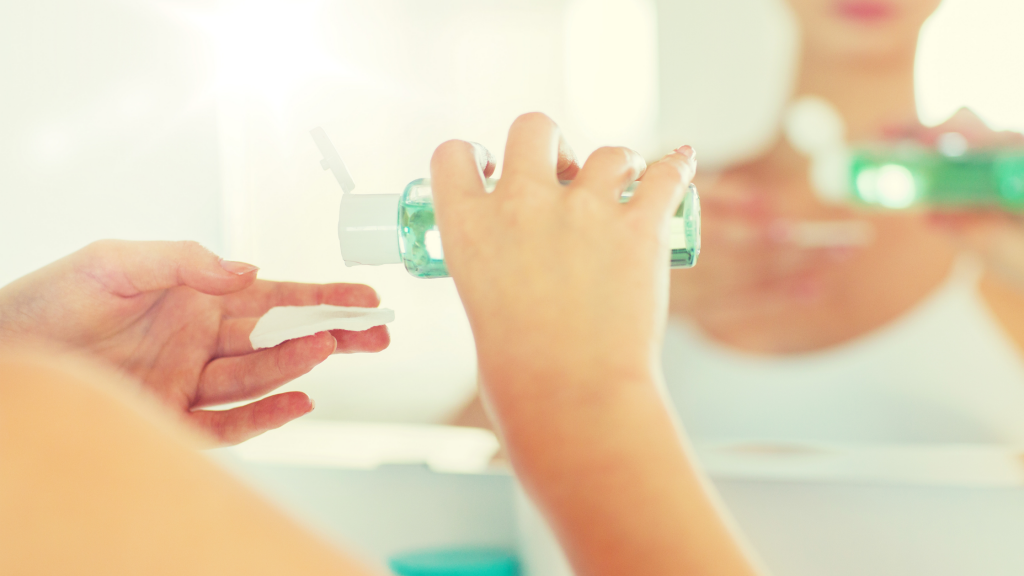
I have always been fascinated by French women’s beauty — they have a certain je ne sais quoi and seem to always have glowing skin. What’s their secret? Simple beauty routine (cleanse, tone, and moisturize) and water-based skincare products… Micellar water and Toner.
What is Micellar Water?
The French invented Micellar water. Apparently, French tap water especially in Paris is extremely harsh on the skin. It contains large deposit of minerals that made their skin look dull. So, they came up with eau micellaire. This beauty product has since built a cult following worldwide and has set a trend as the ultimate cleanser.
Micellar water is basically a combination of oil and water. It is both hydrophobic (oil loving) and hydrophilic (water loving.) The tiny oil droplets called micelles are suspended into soft water and draw out dirt, oil, and grime from the face, leaving it clean and hydrated. It also removes makeup, including waterproof eye make-up.
When do you use it?
Use micellar water before anything else. It’s the first step in your skincare routine. Pour some micellar water on a cotton pad and glide it over your face to clean it. It’s basically a really gentle cleanser that’s super hydrating and often contains rebalancing ingredients like probiotics, hyaluronic acid and lactic acid, rose and cornflower extract. Follow this step with a rinse off wash and then go ahead and use a toner.
Toning
Toners on the other hand have a bad reputation. I often have clients tell me that they think toners don’t do anything and can be drying on the skin. They are not totally wrong as the toners in the past had high levels of alcohol that removed oil and sucked every bit of moisture out of your skin.
Modern toners, however, are formulated to be more gentle. Still, you might be wondering, what do toners actually do? They prevent dirt build-up by minimizing the size of the pores and remove dust particles stuck in them. With the right blend of ingredients, a toner can leave your skin smooth, bright, and toned. A good toner will also balance out your skin’s pH level, revitalize its protective barrier and prepare the way for your serum or moisturizer.
For combination or oily skin, toners can reduce enlarged pores and excess oil. Look for aloe vera, niacinamide, burdock root, tea tree and vitamin B in the formula.
For normal, dry, or sensitive skin types, toners can lessen redness and flaking. Look for hyaluronic acid, ceramides, panthenol, sea whip and willow herb in the formula.
When do you use it?
Use a toner after you’ve wiped off your makeup, applied micellar water and cleansed your face. It is basically water with skin-loving ingredients like glycerin and antioxidants that prep the skin for the next stage — either a serum or moisturizer or both.
Misting vs cotton pad application
My recommendation is to use cotton wipes am and pm for both micellar water and toner, and mists and hydrosols during the day.
Bonus tip: Swap out your hand sanitizer with this non-drying alternative.
Often alcohol-based hand sanitizers can be drying or irritating to the skin. Micellar water is a wonderful alternative for cleaning your hands in a pinch if you don’t have a sanitizer available — no rinsing required.
Last but certainly not least, you can use micellar water as a brush cleaner. Makeup artist and beauty blogger Hillary Kline explains, “What’s nice about micellar water is that it is made to get rid of dirt and oil, which helps get rid of all that buildup on your makeup brushes.” Just swap out brush cleaner for your choice of micellar water and wash your brushes at least once a week.
Micellar water vs toner isn’t a battle of comparable items. Both serve different purposes: micellar water for cleansing, moisturizing, and toning and toner for, well… toning. You can use micellar water without needing to tone but, if you have oily or breakout-prone skin and you stick with a regular cleanser, you’ll need a toner to restore your pH balance. Ultimately, in this battle of the skincare products, everybody wins.
For more skincare tips, visit our website, call us at Skinsense Wellness at (323) 653–4701, or check out our other blogs on Medium. And for skincare services, please visit us at 8448 W. Third Street, Los Angeles, CA 90048. We have re-opened our doors and are ready to welcome you all back.



